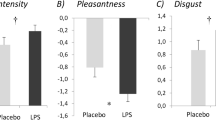Abstract
A number of studies concerning the analysis of axillary odors have assumed that the characteristic odor produced in the axillae is due to volatile steroids and isovaleric acid. Organoleptic evaluation of Chromatographic eluants from axillary extracts was employed to isolate the region in the chromatogram where the characteristic odor eluted. The odor of the dissolved eluant was eliminated when it was treated with base, suggesting that acids make up the characteristic axillary odor. Subsequent extraction of the pH-adjusted axillary extract in conjunction with organoleptic evaluation of the Chromatographic eluant, preparative gas chromatography, and analysis by GC-MS as well as GC-FTIR showed the presence of a number of C6 to C11 straight-chain, branched, and unsaturated acids as important contributors to the axillary odor. The major odor component is (E)-3-methyl-2-hexenoic acid. Three homologous series of minor components are also important odor contributors; these consist of the terminally unsaturated acids, the 2-methyl-C6 to -C10 acids and the 4-ethyl-C5 to -C11 acids. These types of acids have not been reported previously as components of the human axillary secretions and have not been proposed previously as part of the principal odor components in this area.
Similar content being viewed by others
References
Amoore, J., Pelosi, P., andForrester, J. 1977. Specific anosmias to 5a-androst-16-en-3-one and pentadecalactone: The urinous and musky primary odors.Chem. Senses Flavor 2:401–425.
Bird, S., andGower, D.B. 1980. Measurement of 5α-androst-16-en-3-one in human axillary secretions by radioimmunoassay.J. Endocrinol. 85:8–9.
Boelens, H., Haring, H.G., andde Rijke, D. 1983. Threshold values of and human preferences for 4-ethyl octanoic and 3-methyl butanoic acid.Perfum. Flavorist 8(1):71–74.
Brooksbank, B.W.L. 1970. Labeling of steroids in axillary sweat after administration of 3 H-5-pregnenolone and14C-progesterone to a healthy male.Experientia 26:1012–1016.
Brooksbank, B.W.L., Brown, R., andGustafsson, J.A. 1974. The detection of 5-α-androst-16-en-3α-ol in human male axillary sweat.Experientia 30:864–865.
Brownlee, R.G., andSilverstein, R.M. 1968. A micro-preparative gas Chromatograph and a modified carbon skeleton determinator.Anal. Chem. 40:2077–2079.
Budzikiewicz, H., Djerassi, C. andWilliam, D.H. 1967. Mass Spectrometry of Organic Compounds. Holden-Day, San Francisco, pp. 155–162; 214–218.
Claus, R., andAlsing, W. 1976. Occurrence of 5α-androst-16-en-one, a boar pheromone, in man and its relationship to testosterone.J. Endocrinol. 68:483–484.
Cutler, W.B., Preti, G., Krieger, A., Huggins, G.R., Garcia, C.R., andLawley, H.J. 1986. Human axillary secretions influence women's menstrual cycles: The role of donor extract from men.Harm. Behav. 20:463–473.
Dravnieks, A. 1975. Evaluation of human body odors: Methods and interpretations.J. Soc. Cosmet. Chem. 26:551–571.
Gordon, S.G., Smith, K., Rabinowitz, J.L., andVagelos, P.R. 1973. Studies of trans-3-methyI-2-hexenoic acid in normal and schizophrenic humans.J. Lipid Res. 14:495–503.
Gower, D. 1989. The significance of odorous steroids in axillary odour, pp. 47–75, in S. Van Toller and G.H. Dodd (eds.). Perfumery: The Psychology and Biology of Fragrance. Chapman and Hall, London.
Hurley, J., andShelly, W. 1960. The Human Apocrine Gland in Health and Disease. Charles C Thomas, Springfield, Illinois.
Kligman, A.M., Leyden, J.J., andMcGinley, K.J. 1976. Bacteriology of skin.J. Invest. Dermatol. 67:160–168.
Labows, J.N. 1979. Human odors: What can they tell us?Perfum. Flavorist 4:12–17.
Labows, J.N. 1988. Odor detection, generation, and etiology in the axilla, pp. 321–343, in C. Felgen, and K. Laden (eds.) Antiperspirants and Deodorants. Marcel-Dekker, New York.
Labows, J.N., andWysocki, C.J. 1984. Individual differences in odor perception.Perfum. Flavorist 9:21–26.
Labows, J.N., McGinley, K.J., Leyden, J.J., andWebster, G.F. 1979a. Characteristic γ-lactone odor production of the genus Pityrosporum.Appl. Environ. Microbiol. 38(3):412–415.
Labows, J.N., Preti, G., Hoelzle, E., Leyden, J., andKligman, A.M. 1979b. Steroid analysis of human apocrine secretion.Steroids 34:249–258.
Labows, J.N., McGinley, K.J., andKligman, A.M. 1982. Perspectives on axillary odor.J. Soc. Cosmet. Chem. 34:193–202.
Leyden, J.J., McGinley, K.J., Hoelzle, E., Labows, J.N., andKligman, A.M. 1981. The microbiology of the human axillae and its relation to axillary odors.J. Invest. Dermatol. 77:413–416.
Marin, A.B., Acree, T.E., andBarnard, J. 1988. Variation in odor detection thresholds determined by charm analysis.Chem. Senses I3(3):435–444.
McGorrin, R.J., Pofabl, T.R., andCroasmun, W.R. 1987. Identification of the musty component from an off-odor packaging film.Anal. Chem. 59:1109A-1111A.
Ohloff, G., Maurer, B., Winter, B., andGiersch, W. 1983. Structural and configurational dependence of the sensory process in steroids.Helv. Chim. Acta 66(20): 192–201.
Preti, G., Cutler, W.B., Garcia, C.R., Huggins, G.R., andLawley, H.J. 1986. Human axillary secretions influence women's menstrual cycles: The role of donor extracts of females.Horm. Behav. 20:474–482.
Preti, G., Cutler, W.B., Christensen, C.M., Lawley, H., Huggins, G.R., andGarcia, C.R. 1987. Human axillary extracts: Analysis of compounds from samples which influence menstrual timing.J. Chem. Ecol. 13(4):717–731.
Sato, K., Leidal, R., andSato, F. 1987. Morphology and development of an apoeccrine sweat gland in human axillae.Am. J. Physiol. 252:166–180.
Sevenants, M.R., andSanders, R.A. 1984. Anatomy of an off-flavor investigation: The “medicinal” cake mix.Anal. Chem. 56:293A-295A.
Shehadeh, N., andKligman, A.M. 1963. The bacteria responsible for apocrine odor, Part II. J. Invest.Dermatol. 41:1–5.
Smith, K., Thompson, G.F., andKoster, H.D. 1969. Sweat in schizophrenic patients: Identification of the odorous substances.Science 166:398–399.
Sugiyama, T., Sasada, H., Masaki, J. andYamashita, K. 1981. Unusual fatty acids with specific odor from mature male goats.J. Agric. Biol. Chem. 45:2655–2658.
van den Dool, H., andKratz, P.D. 1963. A generalization of the retention index system including linear programmed gas-liquid partition chromatography.J. Chromatogr. 11:463–471.
Wadsworth, W.S., andEmmons, W.D. 1961. The utility of phosphate carbanions in olefin synthesis.J. Am. Chem. Soc. 83:1733–1738.
Author information
Authors and Affiliations
Rights and permissions
About this article
Cite this article
Zeng, X.n., Leyden, J.J., Lawley, H.J. et al. Analysis of characteristic odors from human male axillae. J Chem Ecol 17, 1469–1492 (1991). https://doi.org/10.1007/BF00983777
Received:
Accepted:
Issue Date:
DOI: https://doi.org/10.1007/BF00983777




